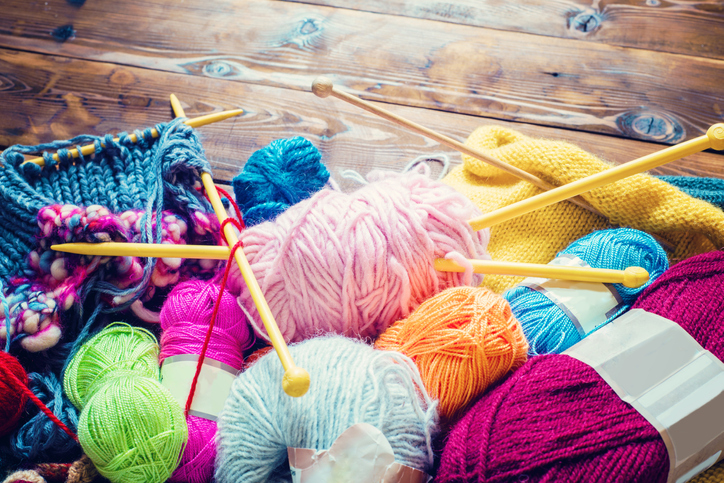Living with Chronic Pain
13 Simple Hobbies for Individuals With Chronic Pain

Chronic pain conditions can cause painful, swollen and stiff joints, which can make it difficult to participate in certain activities. However, engaging in a hobby offers therapeutic benefits, eases depression symptoms, and increases overall well-being, especially for those with chronic pain conditions. Hobby modifications can help those who have lost strength, function, or range of motion resume a cherished hobby or learn a new one.
- Knitting or crocheting can reduce emotional stress and help the fingers stay limber. Modifications include using ergonomic needles and hooks and taking regular breaks. Using spring-loaded scissors rather than standard scissors puts less stress at the base of the thumb. Covering needles and hooks in foam (e.g., a foam hair curler) or in bubble wrap helps to prevent pain caused from gripping.
- Cross-stitch or embroidery can act as a mental distraction and also helps the fingers stay limber. If holding an embroidery hoop for an extended time is an issue, various types of stands are available. This type of needlework does not necessarily require sewing expertise to start.
- Coloring isn’t just for kids anymore. Intricate adult coloring books have become a popular hobby in recent years. Coloring can be a great distraction from pain, and for some people, the process is meditative. It’s also something that can be done with children. If holding a crayon or pencil crayon is too difficult, free coloring apps are available online.
- Painting ignites creativity and provides a distraction from pain while also improving well-being. Ergonomic paint brushes can help prevent wrist or hand pain that may be caused by painting. A variety of options and price points are available, including watercolors, oils, and acrylics.
- Diamond painting is a relatively new hobby that is gaining popularity. It involves placing “diamonds” or crystals in a certain order on a pre-printed picture. The picture has glue on it so the crystals stay in place. It is detailed work and requires concentration, so it can be a great distraction from pain.
- Scrapbooking fosters creativity and is a great way to organize precious memories. Arranging pictures, mementos, and other cherished things together in a scrapbook can be relaxing and practical at the same time. Scrapbooking can also occupy the mind with something fun instead of pain.
- Sewing by machine is also a great way to keep the mind busy and distracted from pain. Working with a sewing machine is often easier on the hands than hand sewing. It’s important to make sure the foot pedal is in a comfortable position for use. Taking periodic breaks from sitting in front of the sewing machine is also important.
- Cooking is a hobby that many people enjoy. It’s also a practical hobby for those with a chronic pain condition who follow a diet tailored to reduce their symptoms. Modifications include slow cookers, prepackaged chopped vegetables, and lightweight pans. Food processors and choppers can prevent undue stress on the hands.
- Visiting a museum may require a lot of walking; however, benches are often situated throughout museums and can be used for periodic sitting breaks. Admiring artwork is often a pleasant and educational experience.
- Puzzles, word games, or Sudoku help keep the mind sharp. If holding a pencil is too difficult, apps are available to play on a smartphone, computer or iPad.
- Reading is often a very relaxing hobby. If holding a book causes pain, using a book holder or downloading the audio version is helpful. Joining a book club provides social interaction that helps lift the mood.
- Bird watching can be a fun and relaxing hobby for people with chronic pain conditions. Slow walking in nature while bird watching provides both physical activity and fresh air.
- Gardening provides both physical and mental benefits. Modifications include taking breaks, avoiding heavy lifting, and using a gardening stool. Large handle garden tools do not require a tight grasp, and elongated handles help avoid stooping. A wheeled tool caddy helps save much-needed energy.
An occupational therapist can help with any needed modifications for hobbies. During flare-ups or high pain days, taking a break may be required. Hobbies should be done immediately after taking pain medication or at a time of day when pain is lessened. Using temperature therapy prior to engaging in hobbies and taking frequent breaks can also keep pain levels from rising.


















